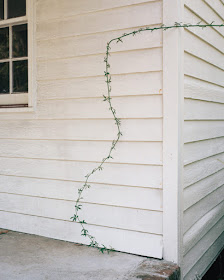The section of the USA we call Appalachia has been the setting for lots of photography over the years.
This work has itself proved controversial primarily because of the economic and cultural distance between Appalachia itself and the world in which most audiences for fine art photography happen to live.
And, for that matter, the world in which most photographers of Appalachia happen to live when they are not on the road, photographing in Appalachia.
Audiences have often found the work engaging, compelling, even motivating to political action.
Or, they have labeled the work "poverty porn," and questioned the motivations that lead audiences to support photographers in making images of a world they usually depict as impoverished, its citizens poorly
educated, inadequately housed, and, perhaps worst (or maybe best) of all, annoyingly
eccentric in dress, looks, attitudes, and behavior.
This has led photographer Stacy Kranitz, who has worked extensively in Appalachia, to seek in her work a remarkable level of personal engagement with her subjects and personal honesty about her motivation for her work.
Kranitz' approach to photographing in Appalachia brings to her work a strong sense of collaboration with her subjects, and with their cultural and economic worlds.
Kranitz has now pulled together a group show of photographs made in Appalachia which seeks to explore the relationship between photographer and subject, between the culture of aesthetic representation and the culture that provides these artists with the material they use to make the images they have produced.
The show is called Representing Place: Photographs of Appalachia, and its up now through March 5th, 2017, at the Tracey Morgan Gallery, at 188 Coxe Avenue, in Asheville.
Photographers whose work Kranitz has chosen for the show include Ken Abbott (see image directly below), Rob Amberg (see image above, top), William Christenberry,
Walker Evans, Sarah Hoskins (see image third from the top), William Gedney, Megan G. King, Builder
Levy, O. Winston Link, Susan Lipper (see image second from the top), Tammy Mercure (see image two images down), Pamela Pecchio (see image directly above), Mike
Smith, Doris Ulmann and Bayard Wootten.
The work on view ranges from classic images by Walker Evans, Builder Levy, and O. Winston Link to work from the heyday of B+W documentary photography, to more recent work, in color and often much more openly self-questioning about what constitutes an appropriate subject for a photograph, or the appropriate time to make it.
So we get in this show a kind of documentary history of photographing Appalachia -- how its been done, how photographers have gone about their work -- as well as a history of this photography's reception by that audience of which we are a part.
In Kranitz' words, "The exhibition explores the complicated series of negotiations involved
in representing place and how the photographer seeks to demystify
stereotypes; sum up experience; interpret memory and history through a
variety of photographic strategies."
This show is an important show, because of the work on offer, of course, but also because of the kinds of reflection it promotes about the nature of what photographers in the South do when they photograph, and, especially, of what relationship we document ourselves as having with our subjects and their cultural and physical setting when we make the work we make in the South.
Kranitz herself continues to be busy (see image directly above) with the work of photography.
You can glimpse the range of her work if you check out any of the editorial projects linked here:
In Bloomberg Businessweek - Can West Virginia's New Governor Save Coal Country
In Society - À L'école Obama
In the New York Times - A.T.V's Draw Tourists to Coal Country
And, you can catch up with her in person at the talks she's giving later this spring, here:
On Wednesday February 8th, 2017 at 6:30pm, she will be at Point Park University's Center for Media Innovation in Pittsburgh, PA for a lecture on her work in central Appalachia.
She'll also be speaking about how stereotypes and personal moral beliefs code the way we perceive and read images at the True/False Film Festival in Columbia, Missouri, on March 2nd-5th, 2017.
All well worth checking out. Kranitz is bringing us important work, and raising questions that are important to raise as we continue the practice of fine art photography in the American South.









































